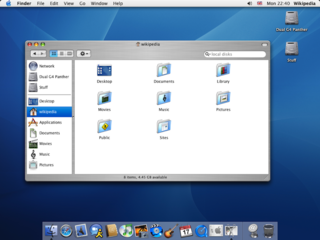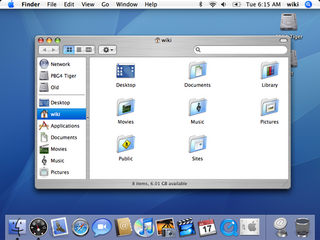It has been requested that the title of this article be changed to Apple Mail . Please see the relevant discussion on the discussion page. The page should not be moved unless the discussion is closed; summarizing the consensus achieved in support of the move. |
This article is missing information about the watchOS (Apple Watch) version of the software.(September 2015) |
  | |
| Operating system | macOS, iOS, and watchOS |
|---|---|
| Type | Email client |
| Website | www |
Mail (also known as Apple Mail or Mail.app) is an email client included by Apple Inc. with its operating systems macOS, iOS and watchOS. Mail grew out of NeXTMail, which was originally developed by NeXT as part of its NeXTSTEP operating system, after Apple's acquisition of NeXT in 1997.

An email client, email reader or more formally mail user agent (MUA) is a computer program used to access and manage a user's email.

Apple Inc. is an American multinational technology company headquartered in Cupertino, California, that designs, develops, and sells consumer electronics, computer software, and online services. It is considered one of the Big Four of technology along with Amazon, Google, and Facebook.

An operating system (OS) is system software that manages computer hardware and software resources and provides common services for computer programs.
Contents
- History
- NeXTMail
- First release
- Mac OS X Tiger
- Mac OS X Leopard
- Mac OS X Snow Leopard
- Mac OS X Lion
- OS X Mountain Lion
- OS X Mavericks
- OS X Yosemite
- OS X El Capitan
- macOS Mojave
- See also
- References
- External links
The current version of Mail utilizes SMTP for message sending, POP3, Exchange and IMAP for message retrieval and S/MIME for end-to-end message encryption. [1] [2] It is also preconfigured to work with popular email providers, such as Yahoo! Mail, AOL Mail, Gmail, Outlook and iCloud (formerly MobileMe) and it supports Exchange. [3] iOS features a mobile version of Mail with added Exchange ActiveSync (EAS) support, though it notoriously missed the functionality of attaching files to reply emails until the release of iOS 9. [4] EAS is not supported in the macOS version of Apple's Mail app, the main issue being that sent messages will incorrectly be duplicated in the sent messages folder, which then propagates via sync to all other devices including iOS.
The Simple Mail Transfer Protocol (SMTP) is a communication protocol for electronic mail transmission. As an Internet standard, SMTP was first defined in 1982 by RFC 821, and updated in 2008 by RFC 5321 to Extended SMTP additions, which is the protocol variety in widespread use today. Mail servers and other message transfer agents use SMTP to send and receive mail messages. Proprietary systems such as Microsoft Exchange and IBM Notes and webmail systems such as Outlook.com, Gmail and Yahoo! Mail may use non-standard protocols internally, but all use SMTP when sending to or receiving email from outside their own systems. SMTP servers commonly use the Transmission Control Protocol on port number 25.
In computing, the Post Office Protocol (POP) is an application-layer Internet standard protocol used by e-mail clients to retrieve e-mail from a mail server.
Microsoft Exchange Server is a mail server and calendaring server developed by Microsoft. It runs exclusively on Windows Server operating systems.
Features of Mail include the ability to configure the software to receive all of a user's email accounts in the one list, ability to file emails into folders, ability to search for emails, and ability to automatically append signatures to outgoing emails. It also integrates with the Contacts list, Calendar, Maps and other apps.












